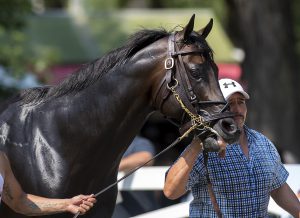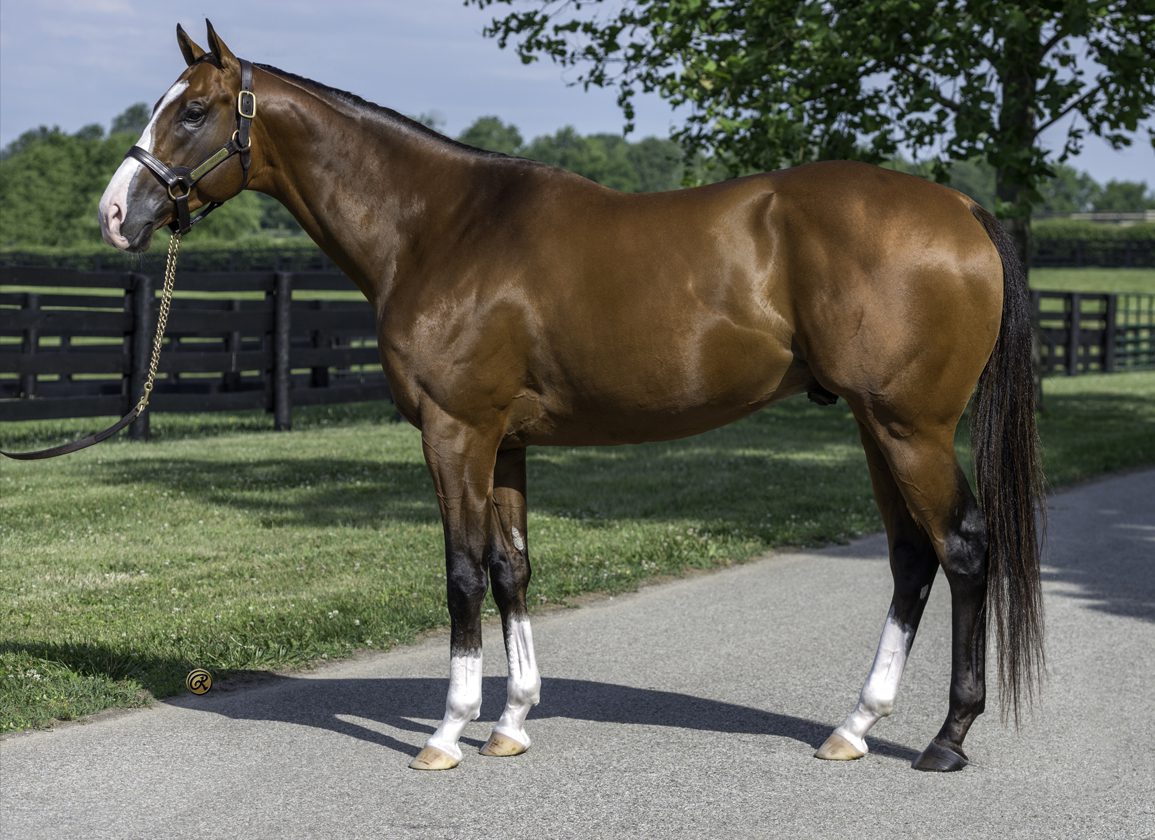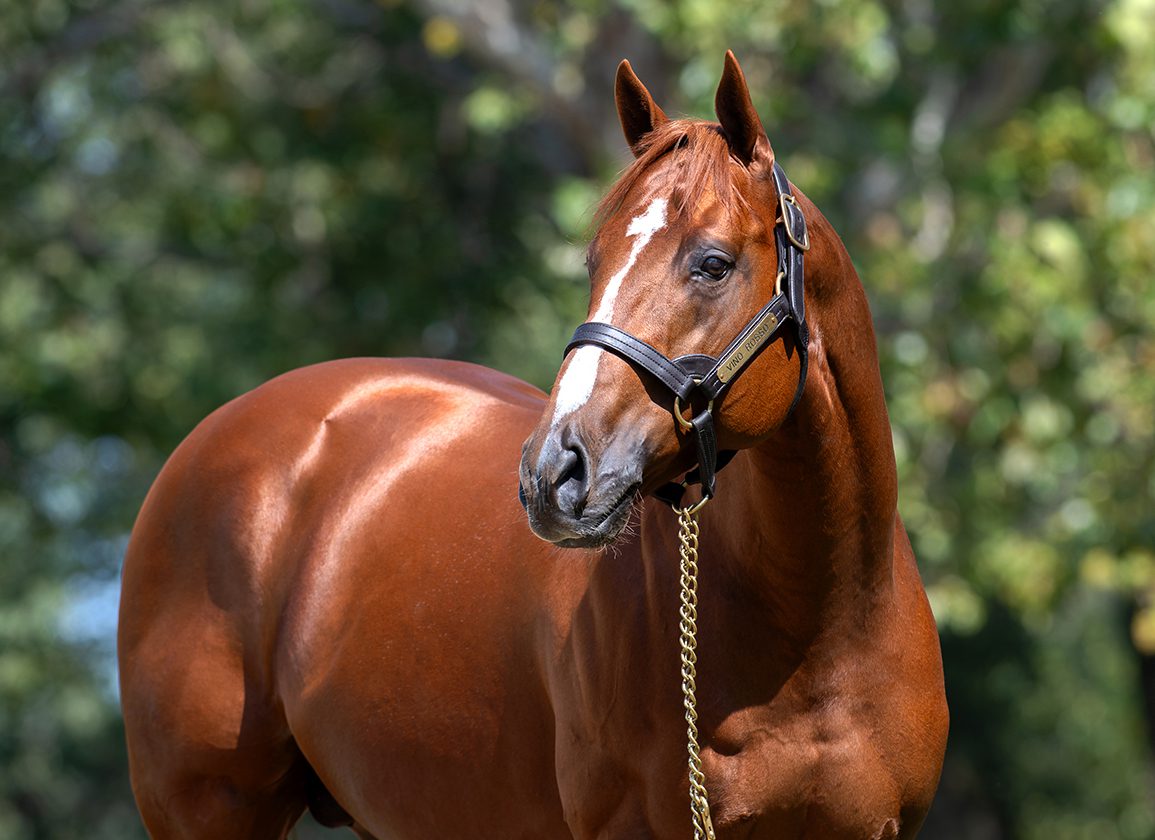Today we reach quite a crossroads in the market, between $20,000 and $29,999. It takes a degree of affluence to roll the dice at this level, but you'd do so hoping to reach blood of genuine elite potential.
As usual, we've sieved out the new sires, having given them a separate treatment at the outset. Instructively, however, it's a tier dominated by stallions still in the early stages of their careers. And there is an auspicious flux here. One or two, if building on a promising start on the track, could conceivably prove to be on their way to stardom.
Inevitably, there are also plenty of sires only trading at this kind of fee because they have not yet been exposed on the track. The reality is that few of these will ultimately hold out. And while we've cheerfully highlighted value about a couple of sires at a similarly untested stage, earlier in this series, that's harder to do at this money.
But what these horses do generally have behind them, having started with the sort of profile that merits a strong opening fee, is numbers.
Handsome as he is, for instance, and fast as he ran, it seemed staggering that YAUPON should have covered as many as 242 mares for his debut in 2022, behind only Gun Runner. But next time round, we saw another farm go to a dizzier level yet, allowing rookie turf sprinter GOLDEN PAL to entertain no fewer than 293.
Now we all understand how this model works and breeders embrace it with open eyes. Some will hit a home run, but they're going to have to stand out from a crowd. You all know what the stakes are, and whether it can work in your program, and you don't need me preaching one way or the other. For the record, Yaupon duly processed 36 of 40 weanlings at an average $130,888/median $100,000.
He had to settle for 202 mares last time, some of his 2022 supporters having doubtless flitted straight to Golden Pal; but others yet will have switched to his new studmate CYBERKNIFE, who mustered 223. Gun Runner has risen so fast that more affordable sons are finding themselves quickly in the game, and this was one of his breakout stars who beat a 37-year track record in the GI Haskell S.
The sophomore frustrations of CORNICHE cannot have helped his cause, so a book of 180 pays tribute to the brilliance of his championship campaign. As much as the way he dominated the crop as a juvenile, the pinhookers will be dwelling on his $1.5-million breeze as a 2-year-old (and 98 Beyer on debut). Some arcane names seed his family, but the genes were all functioning in his dam, six-time graded stakes scorer Wasted Tears (Najran).
Standing on a couple of farms that know how to keep a young stallion in the game, Golden Pal, Yaupon, Cyberknife and Corniche all take a trim in 2024 from $30,000 to $25,000.
The industrial approach is long familiar at Spendthrift and Ashford, but Juddmonte also played a candidly commercial game with MANDALOUN, who opened with as many as 211 partners. So he has certainly been given every chance of riding the luck he enjoyed when promoted from second for both his Grade Is. He actually paid somewhat for that rather freakish fortune, in that it distracted people from his inherent merit. Meanwhile he's another taking a clip, in his case from $25,000 to $20,000.
These horses are slipstreaming a handful on the brink of launching their first runners. One who excelled at the sales was WAR OF WILL, whose $117,202 average (for 61 of 77 sold) placed him third in the debutants' table (sales up to $650,000, $85,000 median). He duly retains his opening fee at $25,000. War of Will appeals as a stallion for our times, as a Grade I scorer on both dirt and turf, but the clincher is a Niarchos family saturated with quality. A full subscription of 143 mares in his debut book has predictably tapered a little since (112 and 84), but the enthusiasm of the market is a huge plus for a horse who must contend with its crass reservations about anything–even a Preakness winner!–bearing a taint of turf.
Two others from his intake not only started out with very similar books (157 and 159), but achieved an identical median of $53,500 with their first yearlings. That was better news for GAME WINNER than TIZ THE LAW, in that they opened at $30,000 and $40,000, respectively. Their averages were very similar too: the former sold 66 of 84 at $95,772, just behind the latter with 64 sold of 70 at $99,835. They remain in step now, both down to $20,000 for 2024.
It was Tiz the Law who rallied in his second book, to 218 mares against 131 for Game Winner, and maintained an advantage of 131 against 96 last spring. He collected a series of stallion-making Grade Is–Champagne/Florida Derby/Belmont/ Travers–and might well have added the Derby if only it had been run at the normal date in 2020. That makes him look a lot of horse at this money.
As for Game Winner, he obviously offers commercial precocity as an unbeaten champion juvenile, and very few of the crop managed to close the gap on him at three.
How those behind this trio would love to see them emulate MAXIMUS MISCHIEF, VINO ROSSO and FLAMEAWAY, who have all just completed their freshman season in a way that has earned an elevation in fee for 2024.
Spendthrift buddies Maximus Mischief and Vino Rosso contested second in the first-season sires' table all the way to the wire. The former–repeatedly advised as a commercial no-brainer at $7,500–is hiked to $25,000 and Vino Rosso, having been kept in the game in familiar fashion by halving to $15,000 from an opening $30,000, now inches back up to $20,000.
Inevitably their farm has succeeded in maintaining volume behind both horses. In their fourth books, Vino Rosso covered 171 mares and Maximus Mischief 159. Pretty impressive, given how many of their original supporters must have been the type that annually jumps from one new sire to the next.
Vino Rosso, having himself thrived with maturity, has surprised people with the precocity of some stock, but then you're going to get many different flavors with no fewer than 155 named foals in your debut crop! His 23 winners actually represent an unremarkable percentage, then, but where Vino Rosso does deserve credit is in mustering four to make the frame at Grade I level. Overall this has been an unproductive class, in graded stakes terms, but at least Vino Rosso has been coming up with the right caliber.
Maximus Mischief has mustered a solitary graded stakes placing, though of course he was dealing with relatively modest materials when starting at a quarter of Vino Rosso's opening fee. This is a big moment for him, in that he needs to capitalize on his platform of 31 winners with an upgrade in mares at his new fee. (Predictably enough, he has already launched the highest percentage of named foals among all the freshman sires, at just about two-in-three). His yearling average held up well, with 57 of 67 sold at a $38,000 median (average $47,312) compared with $40,000 (average $57,019, as much as anyone could have asked off a $7,500 conception) for 77 sold last year.
Vino Rosso's 75 sales from 98 yearlings offered from his second crop achieved a $45,000 median ($55,558 average), down from $61,000 ($94,287 average) for 112 sold on debut. But his own template (and that of his own sire Curlin) is encouraging for his stock to keep progressing now, and interestingly both Vino Rosso and Maximus Mischief moved their weanling prices back up compared with 2022.
Hats off to Flameaway, meanwhile, for getting closest to breaking up the Spendthrift freshman monopoly. None of the quartet above him can match his four stakes winners, while he joins only champion Mitole and Solomini in relieving the overall embarrassment of the class in at least managing one graded stakes scorer.
It must be said that he had decent numbers behind him, with 109 named foals, but by the same token the pipeline will be maintained by three-figure books annually since. Like Maximus Mischief, he needs to seize the moment after making precisely the same leap in fee, to $25,000 from $7,500. His second crop of yearlings didn't really reflect the fine start made by their predecessors, 41 of 54 changing hands at an unchanged median of $30,000 (average $44,950, down from $49,340). But there should be plenty of action to come from such a versatile horse, who won at various trips on three different surfaces. Auspiciously, his flagship Dreamfyre divided her two graded stakes wins between six furlongs of dirt and a mile of turf. Flameaway's third dam is a true matriarch in Europe and he offers all the flexibility we should be seeking in a changing landscape.
VALUE PODIUM
Bronze: BLAME
(Arch–Liable, by Seeking the Gold)
Claiborne, $25,000
How many of the aspiring youngsters who dominate this tier will end up achieving anything like as much as Blame? Entering his 13th season at stud, he has settled into the middle of this bracket as by far its most established operator. In fact, he's become a rather unique horse at this level. Everyone else is passing through, in one direction or the other. Blame is the only one trading at this kind of money where you know definitively where you stand. Others could yet turn out to have flattered to deceive, whereas he has found a fairly uncontested place among proven sires, between the blue-collar strivers and the unaffordable elite.
He's actually had a modest year by his standards, with only three stakes winners, albeit these did include a sixth Grade I scorer in Wet Paint. But his lifetime rations are extremely solid: 6.5% stakes winners from named foals, 3% at graded stakes level. His ratios are a match for the likes of Munnings, Street Sense and Twirling Candy, to name just three sires too good to be embarrassed by the comparison. And the big news with him over the past couple of years is his precocious emergence as a broodmare sire.
His breakout moment in this role was the GI Breeders' Futurity S. at Keeneland in 2022, aptly sponsored by Claiborne, when the pair that dueled clear of a strong field–champion Forte (Violence) and the luckless Loggins (Ghostzapper)–were both out of Blame mares. This is hardly a surprising development in a stallion whose third dam is none other than Special (Forli {Arg}). So for many programs–one that would like to keep a filly, for instance, or just to prove a young mare–Blame will offer better value than most horses in higher tiers. For the record, the niche he has carved out for himself could be measured in 2023 by a book of 129 mares, plus a yearling average of $94,442 (up from $82,075)–both really solid for a horse at this level of the market, at this stage of his career.
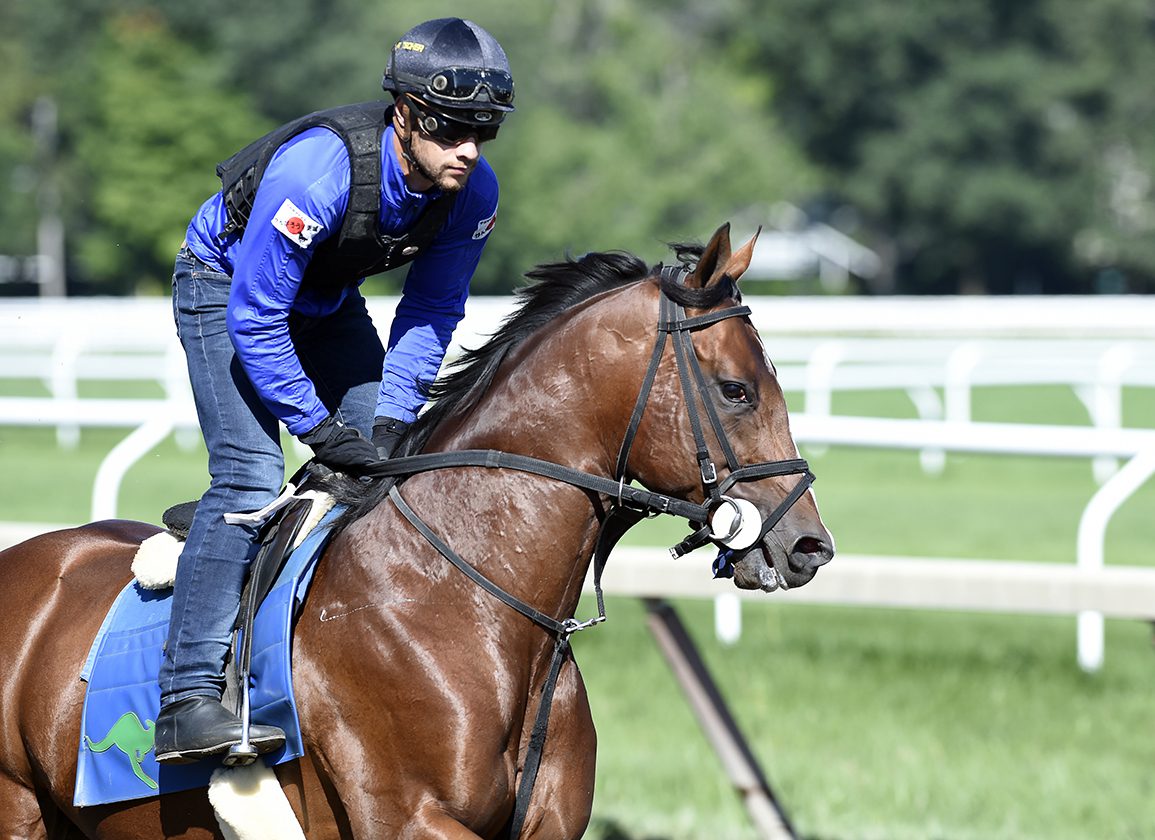
Oscar Performance | Sarah Andrew
Silver: OSCAR PERFORMANCE
(Kitten's Joy–Devine Actress, by Theatrical {Ire})
Mill Ridge, $25,000
Cometh the hour, cometh the man.
Here's a horse that faced only one problem when retiring to stud, but one as significant as it was tiresome: the notorious myopia of the domestic market regarding even high-class grass stallions. We all know how brutally difficult it is to stand a turf horse in the Bluegrass. Even English Channel and Kitten's Joy never quite cracked ringside prejudice sufficiently to obtain adequate reward for their outstanding records. But the consecutive loss of both those horses, even as he started out, nonetheless represented a big opportunity for Oscar Performance. And while it's still early days, he's making a strong case to step up as heir to his sire.
Oscar Performance covered 160 mares last spring, much his biggest book in his fifth season at stud. He had covered just 63 the previous year, but started out with a couple of three-figure books, so there will be plenty of talent coming through–especially when you recall how he kept thriving as a runner–to keep his name in lights, pending the arrival of the better stock he should be producing now.
And here's something else he did this year, that would be no less exceptional in a commercial dirt stallion. Offering his third crop of yearlings, he achieved an average of $79,959 (23 sold from 30; admittedly a $35,000 median was more in line with the $15,000 conception fee) up from $57,474 ($32,500) for his second; and $43,149 ($26,000) for his first. In other words, he's reversing the usual trend: his stock is gaining in value by the year.
Why is this happening? Well, as we said, it's still early in the piece. None of his stock is yet at the same age as Oscar Performance when he won his fourth Grade I in the Woodbine Mile. But he's now had two crops to borrow the precocity he also required to win the GI Breeders' Cup Juvenile Turf, and they have together produced eight graded stakes horses at a ratio (5% of named foals) exceeded, in what looks a very strong intake, only by Justify; and matched only by Bolt d'Oro.
Interestingly his principal earner to date is Red Carpet Ready, whose two graded stakes wins actually came on the main track–on which surface he's also had Tumbarumba win the Ellis Park Derby and Deer District win a Churchill allowance by 10 lengths before placing in the GII Amsterdam S. So second and third dams by Mr. Prospector and Slew o' Gold are obviously having a say while, purely in terms of quality, his own mother has also produced two additional graded stakes-winning siblings.
His second crop has produced dual graded stakes scorer Endlessly, who looks aptly named for how far his sire may advance from here. After returning to his opening fee of $20,000 last year, back up from $12,500, Oscar Performance has now edged up to $25,000. If he can keep building from here, he may reach a much higher level as breeders belatedly service an expanding turf program.
Gold: ARMY MULE
(Friesan Fire–Crafty Toast, by Crafty Prospector)
Hill 'n' Dale, $25,000
This was a racetrack meteor–brief but bright–and now we're immediately seeing persuasive evidence that he may be replicating the freakish talent that we only glimpsed. It's not the most conventional profile, nor pedigree, but the functionality cannot be in question. If Army Mule carries on the way he has started, enough people are going to accept that reality for him to break into the elite. If so, doubling his fee from $12,500 last year is only going to be a start.
Remember he had to muscle his way into an exceptionally strong class of freshmen. Justify is soaring to stardom, either side of the water, and Good Magic came up with a Derby winner at the first attempt. In his first two crops, sired at $10,000 and $7,500, Army Mule produced only 138 named foals. Of the five above him in the cumulative earnings table, Mendelssohn has 323; Justify 309; Bolt d'Oro 238; Good Magic 226; City of Light 191. So guess what, some (but only some) of those have more stakes winners. But in what ratios?
Start with his individual winners: 68 from 108 starters, 49% of named foals. Justify is getting his at 28%; Good Magic 38%; Bolt d'Oro 39%; Mendelssohn 36%; City of Light 30%.
Of these, 10 have won at black-type level: 7.3% of named foals. Justify is operating at 6.5%; Good Magic matches Army Mule at 7.5%; Bolt d'Oro is on 4.2%; and Mendelssohn 1.9%; City of Light 3.7%. In terms of stakes performers overall, Army Mule's 11.6% is only matched in the class by Bolt d'Oro.
Understandably, given the relative caliber of mares they will have received, Army Mule can't quite see that performance through at graded stakes level. He only has two such winners, among five placed. Moreover his farm was not even able to promote his Grade I breakout with One In Vermillion, the Allen Jerkens S. having fallen into his lap in ghastly circumstances. But someone needs to say that One In Vermillion has proved a legitimate graded stakes performer as a $26,000 yearling from the Arizona TBA Fall Mixed Sale. Army Mule also has Danse Macabre, an $11,000 short yearling, close to millionaire status after winning five of her first 10. (Incidentally, another nod to our bronze medalist here: she's out of a Blame mare.)
His debut crop had already done enough by last spring for Army Mule to entertain 199 mares in his fifth season at stud, up from 115 in 2022 and 83 the previous year. His 2024 sophomores emerge from a crop of just 37 live foals, so he may have to tread water briefly. But surely Army Mule is one of those rare stallions who do enough, early enough, to lock in the medium-term momentum required. Sure enough, he sold 28 (from 38) of his latest crop of yearlings for a median $67,500 and average $96,650, up from $51,000 and $69,272: stellar returns for those who kept the faith for a $7,500 conception.
As a rule, I prefer a horse that has left no doubt as to his resilience and Army Mule's entire career comprised barely four minutes. But the talent that made him a six-length Grade I winner (114 Beyer) in that time was already luminous when he turned himself from $35,000 yearling to $825,000 2-year-old. This farm has a great record with these flashbulb talents, and there's a rapidly rising tide to catch with Army Mule.
The breeders have their say…
We asked breeders to weigh in on who their top picks were.
Carrie Brogden of Machmer Hall
GOLD: Army Mule
Gold would have to be Army Mule. He has had so much success from such modest mares that you have to pay attention. If he can simply maintain what he has done so far until the big gun crops come down the pipeline, he has the potential to be a breakout stallion. For example, we sold the dam of Grade I winner One In a Vermillion carrying him in utero for a paltry $4,500, bred on our share that I am probably going to completely regret selling earlier this year. He seems to offer speed, soundness, heart and his good looks.
SILVER: Vino Rosso
(Curlin–Mythical Bride, by Street Cry {Ire})
Spendthrift Farm, $20,000
Silver for me would have to be Vino Rosso. We have booked three mares to him based on what he did with his first crop of 2-year-olds. Considering his own race record and breeding, I would expect that they will excel with added distance. He seems to throw a particular type and I know that he is booked full for 2024, so clearly I am not the only one who sees his future potential. When I was at the Keeneland September sale this year, we had a nice colt out of Queenie's Pride (Special Rate) and the positive feedback I got from trainers and 2-year-old consignors was surprising to me since it was so early in the year for a son of Curlin that won the GI Breeders' Cup Classic as a 4-year-old. Speaking of Curlin, what an emerging superstar sire of sires he is! That coupled with Spendthrift's eye-popping accomplishment of a stallion farm leading home all top four freshman sires for 2023 in North America, the future looks very bright!
BRONZE:
TIZ THE LAW
(Constitution–Tizfiz, by Tiznow)
Coolmore, $20,000
GAME WINNER
(Candy Ride {Arg}–Indyan Giving, by A.P. Indy)
Lane's End Farm, $20,000
Bronze would be a tie between Tiz the Law and Game Winner. Talk about racehorses! Tiz the Law won FOUR Grade Is as a 2-year-old and 3-year-old! He is by a rising top-tier stallion in Constitution and the reception and physical attributes of his babies reminded me of the early crops of Constitution.
Game Winner, a 2-year-old champion, won THREE Grade Is as a 2-year-old and is by the incredible sire of sires Candy Ride. With the ones we had at Machmer Hall and that I saw at the sales, I personally felt that there was a lot of Candy Ride in them. I was the underbidder on two really nice weanlings by him and am still having non-buyer's remorse there. No crystal balls of course, as I am constantly reminded of playing Geoffery Russell's freshman sire contest every year, but both of these young stallions have the race record and stock to step into the very big shoes of both of their fathers.
John Greathouse of Glencrest Farm
GOLD: Blame
Blame was a gutsy racehorse and I think that's what he gets you. He's sired six Grade I winners and has been consistent year after year at the sales and at the races. He produces solid individuals that are sound and can go two turns. Blame is also starting to prove to be an excellent broodmare sire. Forte and Wet Paint are prime examples of that. If you are looking to start a young mare, there aren't many horses you can pick from that stand for less than 30k and are as proven as Blame.
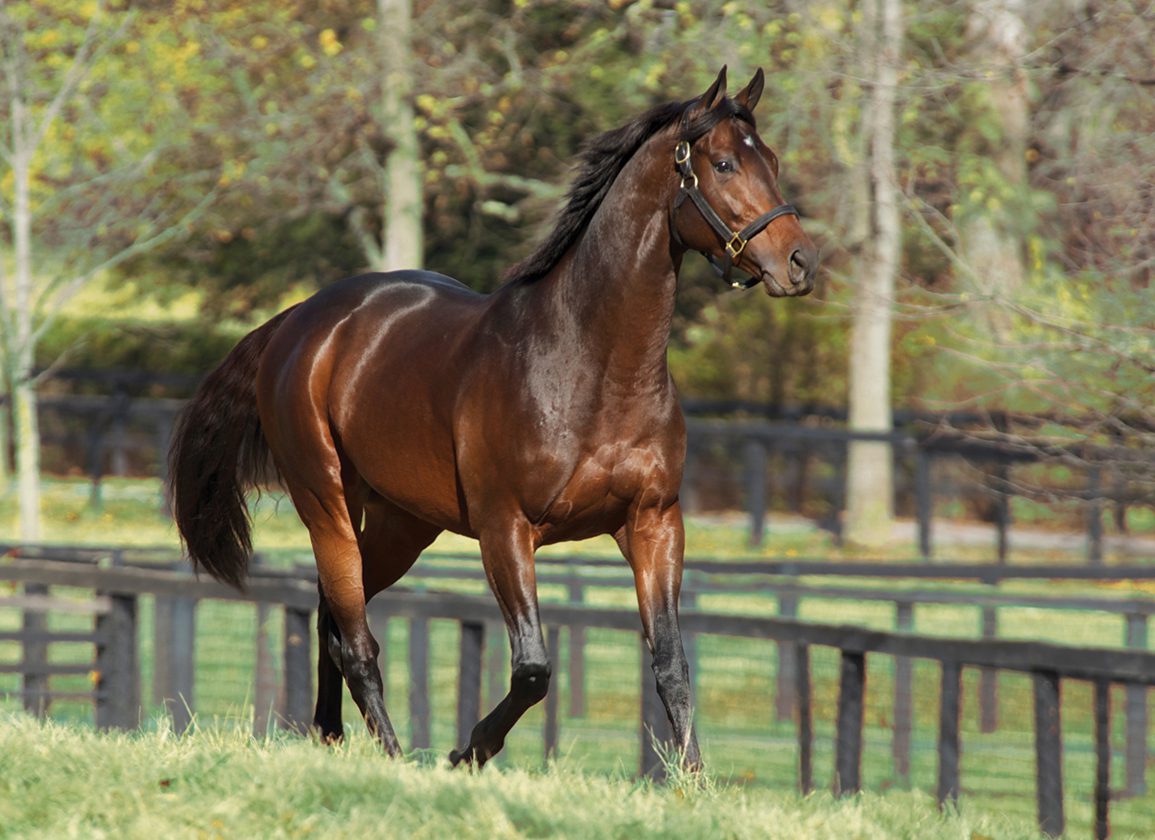
Blame | Claiborne Farm
SILVER: Vino Rosso
Vino Rosso is great value at 20k. He's third on the first-crop sire list, but I think he's far ahead of where most people expected him to be at this point. He was a horse that was better going two turns and I expected his progeny would be the same. His offspring are smooth and athletic. He comes from a serious family of runners. If his progeny improve going longer, we could be talking about him like we were talking about Good Magic in 2023. There is real upside at 20k.
BRONZE: Maximus Mischief
(Into Mischief–Reina Maria, by Songandaprayer)
Spendthrift Farm, $25,000
Maximus Mischief was one of the fastest 2-year-old sons of Into Mischief, which is no easy feat. That precocity is showing up with his 2-year-olds. He's off to a terrific start with 30 winners and sits second on the first-crop sire rankings. He has bred a big book of mares every year, so I don't expect him to slow down anytime soon. I like that he gets a big, strong horse with plenty of bone which suits smaller mares. We have bred to him in the past and will continue to support him this year.
The post Value Sires for 2024, Part 5: The 20-Somethings appeared first on TDN | Thoroughbred Daily News | Horse Racing News, Results and Video | Thoroughbred Breeding and Auctions.
